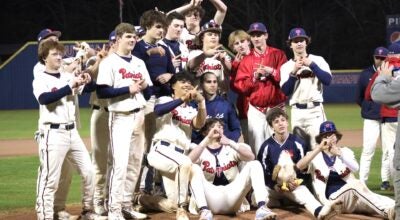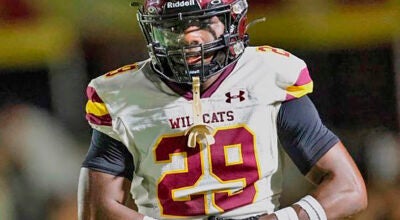Pike County man shares Seminole traditions with Rotary
Published 11:00 pm Wednesday, September 18, 2013
All that Billy J. Johns had in the way of a birth certificate was a piece of paper on which his aunt Arlene had written that she witnessed her sister, Lillian, giving birth to “this baby.”
Acquiring a certified birth record is a story that Johns could tell. But that was not a story he shared with the Brundidge Rotarians Wednesday. Simply said, he was born a Seminole Indian in Glade County, Fla. in 1950.
Johns told the Rotarians that, when he was growing up, nobody wanted to be an Indian.
“Now everybody does,” he said laughing in reference to tribal gaming.
Johns and his family moved from Florida to Pike County in 2007. His wife Tara, laughingly, said she is a white girl from Elba who wanted the peace and quite of the country. Together, the family wanted such a place to live and raise their cattle.
Johns told the Rotarians that Seminole history actually began with bands of Creek Indians from Georgia and Alabama that migrated to Florida in the late 1700s and the Seminole Wars pushed his people deeper and deeper into hiding in Florida.
“They stopped at Okeechobee because there were no more trees so they had nowhere to hide,” Johns said. “Maybe, then, Andrew Jackson decided the Indians weren’t worth killing and just left them alone.”
Many of the Seminoles died of smallpox and measles that had been brought over by the Europeans.
“The Indians had never been exposed to diseases like that, and many died,” he said. “When the government granted 35,000 acres to the Seminoles, it was in the Everglades and most of it was under water.”
But, once ways were discovered to “get the water out,” the land was used as grazing ground for a growing tribal cattle industry.
Johns said, during the Dust Bowl that devastated Arizona in the 1930, train loads of cattle were shipped to Florida.
“Any Seminole Indian that wanted a cow could get one or two or three,” Johns said. “That’s where the Seminole cattle industry got its start – from the Dust Bowl. The Indians branded their cattle and, when cows got lost in the swamps and marshes, the honor system worked. The owners got their cows back.”
Johns said that, today, the Seminole tribe, collectively, has more than 30,000 head of cattle, making it the third largest cattle operation in the country.
The Johns have a herd in Florida in addition to their herd in Pike County.
Johns told the Rotarians that, historically, Seminole Indians are great storytellers.
“Our ancestors didn’t have TV so at night they would gather around the campfire and tell stories,” he said.
“Many of the stories have been passed down and many were about ‘little people.’ These little people are in many of the paintings done by Seminoles.”
Tara Johns explained that the “little people” were to the Seminoles what guardian angels are to the people of the South today.
The Johns shared much of his Indian heritage through artwork, including clothing and dolls made by his mother and through dialogue between him and his son, Jobe, using their native language, which is spoken, not written.
Johns’ 15 minutes of fame possibly came in December 1956 when he and his mother and an aunt appeared in a photograph in “National Geographic.” But he is proudest of his Native American heritage and to be called a Seminole Indian.



